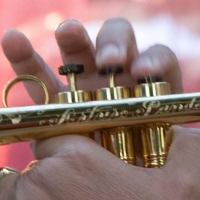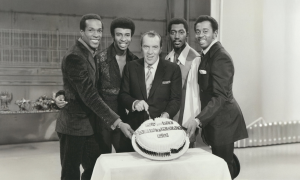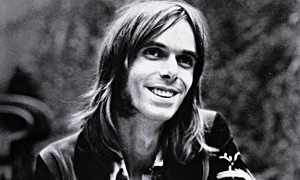Home » Jazz Articles » Film Review » Betty Davis: They Say I’m Different
Betty Davis: They Say I’m Different

At her all too brief peak, the creative Davis was both elusive and reclusive. The Phil Cox documentary provides a keen glimpse of Betty Davis the woman, song writer, vocalist, preeminent funkateer and band leader.
—Walter Atkins
 Betty Davis
Betty Davis Betty Davis: They Say I'm Different
Native Voice Films
2018
The incisive documentary Betty—They Say I'm Different chronicled the humble beginnings and explosive career of the '70s trail blazer, composer and vocalist Betty Davis. Her bold music and incendiary stage persona was light-years ahead of the existing social norms and well beyond music industry categorization. Director Phil Cox tells the compelling saga with her voice, and through interviews with family, childhood friends, performance footage, band members and colleagues. Her unexplained withdrawal from the music scene and the general public lasted over three decades until now.
Born in rural North Carolina, the former wife of Miles Davis discussed her internal muse she called Crow. "There's always been a bird inside me," she said, "Crow...brought me Howlin' Wolf, Jimmy Reed, Chuck Berry, Bessie Smith. Crow brought me Jimi Hendrix and Miles and the whirlwind... there it all began. The beginning of being different like a piece of sugarcane, sweet to the core." At age 12, Davis wrote her first song, "Bake A Cake Of Love" with "a little burning in my heart." The youngster sang it loudly to the chagrin of her nearby neighbors.
The Cox documentary included perceptive comments by women who knew her well. Connie Portis, a childhood friend talked about what Betty represented. "Women have feelings too and can stand up and be equal to men in expressing themselves. That was something women didn't have, a voice." Portis added, "She chose independence which was something women didn't have."
Winona Williams added, "I am sure what Betty did as a performer, every woman would love to do. What she wanted to say in her performance there were no other women doing it. When you're ahead of your time, it could also mean you're ahead of your country."
Davis' first album producer Greg Errico (Sly & The Family Stone) also discussed the making of her eponymous debut album, Betty Davis (1973), which included work from musical luminaries Larry Graham (Graham Central Station), Neal Schon (Journey), The Pointer Sisters and Pete Sears among others. Two other funky bluesy studio albums followed, They Say I'm Different (1974) and Nasty Gal (1975), then silence.
At 17, the aspiring singer/composer left Pittsburgh armed with a notebook full of songs and moved to New York City. She enrolled in the New York Fashion Institute of Technology and worked as a model during the day. "Clothes were an expression of whom we were," she stated in the documentary.
Davis wrote "Uptown To Harlem," recorded by The Chambers Brothers in 1967. While briefly married to jazz icon Miles Davis in 1968, her impact on the trumpeter was immediate. She famously dumped his custom suits and updated his fashion sense with a hip contemporary look. Her design influence could be found in popular performing artists ranging from Parliament Funkadelic to LaBelle. With provocative song titles like "If I'm In Luck I Might Get Picked Up," Davis could not garner appearances on American Bandstand or Soul Train, the two major music stages of the day.
At her all too brief musical peak, the creative Davis was both elusive and reclusive. The Phil Cox documentary provides a keen glimpse of Betty Davis the woman, song writer, vocalist, preeminent funkateer and band leader. It achieved this goal by focusing on Davis' original musical approach, and unrelenting energy in presenting it. Over 30 years since she withdrew from an indifferent music industry and public scrutiny, Betty Mabry Davis has continued to provide a source of inspiration and empowerment for newer generations of women recording artists.
Tags
Film Reviews
Betty Davis
walter atkins
United States
Native Voice Films
Bessie Smith
Neal Schon
The Pointer Sisters
Pete Sears
Chambers Brothers
Miles Davis
Funkadelic
Labelle
Howlin Wolf
Jimi Hendrix
Jimmy Reed
Chuck Berry
PREVIOUS / NEXT
Support All About Jazz
 All About Jazz has been a pillar of jazz since 1995, championing it as an art form and, more importantly, supporting the musicians who make it. Our enduring commitment has made "AAJ" one of the most culturally important websites of its kind, read by hundreds of thousands of fans, musicians and industry figures every month.
All About Jazz has been a pillar of jazz since 1995, championing it as an art form and, more importantly, supporting the musicians who make it. Our enduring commitment has made "AAJ" one of the most culturally important websites of its kind, read by hundreds of thousands of fans, musicians and industry figures every month.






















